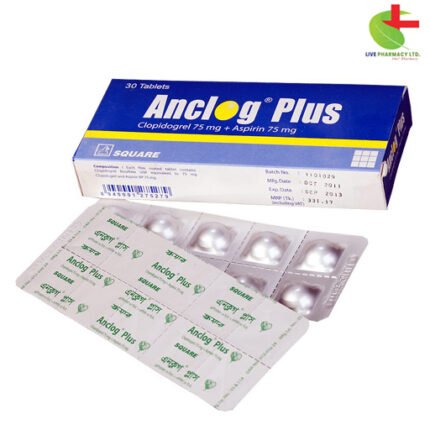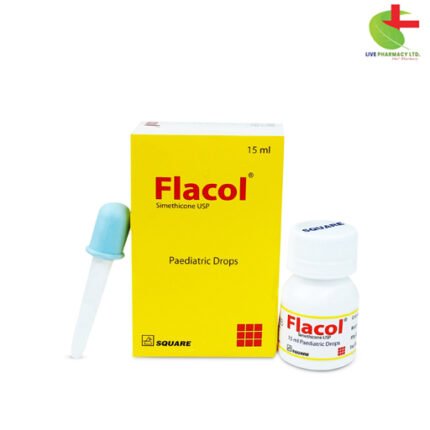Eromycin
60.44৳ Bottle
- Eromycin, a potent macrolide antibiotic, effectively treats a wide range of infections.
- Targets upper respiratory tract issues like tonsillitis and lower respiratory ailments such as bronchitis.
- Addresses ear and eye infections, skin conditions like impetigo, and gastrointestinal tract issues.
- Exhibits bacteriostatic or bactericidal action by disrupting bacterial protein synthesis.
- Suitable for various age groups with dosages tailored to infection severity and patient age.
 Brand
Brand
|
Square Pharmaceuticals PLC |
|---|---|
 Generics
Generics
|
Erythromycin |
Indications
Eromycin proves highly effective in managing a diverse array of clinical infections, addressing conditions such as:
- Upper respiratory tract infections: Including tonsillitis, peritonsillar abscess, pharyngitis, laryngitis, and sinusitis. Also effective against secondary infections accompanying colds and influenza.
- Lower respiratory tract infections: Covering tracheitis, acute and chronic bronchitis.
- Ear infections: Treating otitis media, otitis externa, and mastoiditis.
- Eye infections: Targeting blepharitis and established trachoma.
- Skin and soft tissue infections: Combating boils and carbuncles, impetigo, abscesses, pustular acne, paronychia, cellulitis, and erysipelas.
- Gastrointestinal tract infections: Addressing cholecystitis, staphylococcal enterocolitis.
- Prophylaxis: Offering pre and post-operative care, managing trauma, burns, and rheumatic fever.
- Other infections: Including osteomyelitis, diphtheria, scarlet fever, and whooping cough.
Description
Eromycin, a member of the macrolides group of antibiotics, functions by either halting bacterial growth (bacteriostatic) or destroying bacteria (bactericidal) through specific interference with ribosomal protein synthesis within bacterial cells. It’s particularly effective against penicillinase-producing staphylococci and targets various susceptible microorganisms, including Gram-positive and Gram-negative bacteria, mycoplasmas, and chlamydia.
Pharmacology
Erythromycin inhibits protein synthesis in susceptible organisms by impeding the translocation process. It binds specifically to the 50S subunit or 70S ribosome in these organisms, without binding to the stable 80S mammalian ribosome. Effective against many Gram-positive bacteria, some Gram-negative bacteria, mycoplasmas, and chlamydia.
Absorption: Erythromycin base is acid-sensitive and administered in stable ester form. Absorption rates of both base and esters are reduced in the presence of food. The stearate form undergoes hydrolysis in the intestine, facilitating absorption of free erythromycin.
Blood concentration: Peak serum concentrations are achieved within 1 to 4 hours after oral administration. Serum half-life ranges from 1.2 to 4 hours, extending to about 5 hours in cases of oliguria.
Distribution: Erythromycin is widely distributed throughout the body, with some accumulation in the liver and spleen. Approximately 73% of erythromycin base binds to proteins. It penetrates the cerebrospinal fluid in cases of meningitis and crosses the placenta, excreting into breast milk.
Excretion: About 5 to 15% of the erythromycin dose is excreted in urine, with significant amounts excreted unchanged in bile.
Dosage & Administration
For adults and children over 8 years old, the dosage typically ranges from 250-500 mg every six hours for mild to moderate infections, with the possibility of increasing to 4 gm or more daily for severe cases. Dosage adjustments may be necessary for elderly patients and children based on weight and age.
Interaction
Recent studies indicate that concurrent use of erythromycin with high doses of theophylline may elevate serum theophylline levels, potentially leading to toxicity. In such instances, the theophylline dosage should be adjusted accordingly.
Contraindications
Erythromycin should not be administered to individuals with known hypersensitivity to the drug.
Side Effects
While allergic reactions are rare and usually mild, cases of anaphylaxis have been reported. Some patients may experience abdominal discomfort, nausea, or vomiting following oral administration, typically resolving without dosage adjustment.
Pregnancy & Lactation
Although clinical and laboratory studies haven’t demonstrated human teratogenicity or toxicity, caution is advised when prescribing erythromycin to pregnant or lactating individuals due to its ability to cross the placenta and enter breast milk.
Precautions & Warnings
Careful consideration is needed when administering erythromycin to patients with impaired hepatic function, as the drug is primarily excreted through bile.
Overdose Effects
In cases of overdose, erythromycin should be discontinued. Prompt elimination of unabsorbed drug and appropriate supportive measures should be initiated, as erythromycin isn’t effectively removed by peritoneal or hemodialysis.
Therapeutic Class
Erythromycin belongs to the class of macrolide antimicrobial drugs, primarily used for its anti-diarrheal and antimicrobial properties.
Reconstitution
To prepare the suspension, shake the bottle to loosen the powder. Add 60 ml or 100 ml of boiled and cooled water to the dry powder, shaking well after each addition until fully suspended. Store the reconstituted suspension in a cool, dry place, preferably in the refrigerator, and discard any unused portion after 7 days.
Storage Conditions
Store erythromycin below 25°C, away from light and moisture, and out of reach of children.













Reviews
There are no reviews yet.